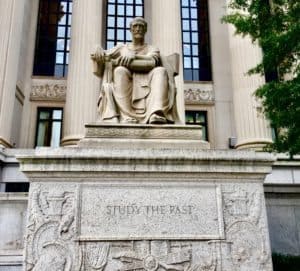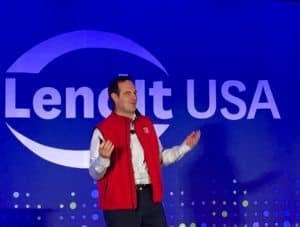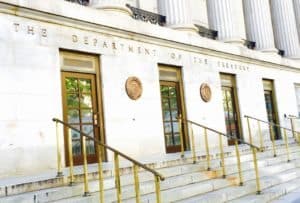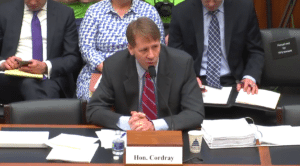
Predicting what will transpire in the coming year is always challenging, particularly in relatively nascent and growing industries such as marketplace lending. While surprises are undoubtedly in store for 2017, indications are that certain trends—the growth of bank partnerships and industry consolidation—will continue and accelerate as some legal certainty is achieved, legal cases which absorbed the industry’s attention in 2016 will be resolved and the focus will shift to Capitol Hill, as marketplace lenders step up lobbying activities given the new administration’s presumed predilection to assist the expansion of credit.
Taking a Look Back at 2016
 Before looking ahead to expected developments in marketplace lending in 2017, it is instructive to look back at 2016, since many of the same themes may likely play out again in the coming year, albeit in slightly different ways.
Before looking ahead to expected developments in marketplace lending in 2017, it is instructive to look back at 2016, since many of the same themes may likely play out again in the coming year, albeit in slightly different ways.
Developments in 2016 are best understood as a tale of three distinct periods.
From the start of the year through mid-May we witnessed what can be described as “rational exuberance” as market participants continued to look optimistically at opportunities, tempered by a recognition that regulatory scrutiny was increasing and demanded careful attention.
 Indeed, the mood at the LendIt USA conference in April showed a mature sensibility that substantial growth was possible, but would need to be achieved with a best-in-class compliance culture.
Indeed, the mood at the LendIt USA conference in April showed a mature sensibility that substantial growth was possible, but would need to be achieved with a best-in-class compliance culture.
The mid-May developments at Lending Club, with the abrupt resignation of its CEO Renaud Laplanche, one of the most prominent figures in the industry who had just a few weeks before regaled the LendIt crowd with a keynote address, marked the start of the second distinct period.
Those events, coupled with the May release of the U.S. Department of the Treasury’s white paper on marketplace lending, which suggested the possibility of expansive additional regulation, and increased focus on the Madden v. Midland case pending before the U.S. Supreme Court, led to a retrenchment during the summer on multiple fronts as new activity slowed significantly. Investors, worried about other surprises, focused on re-underwriting existing relationships and conducting thorough due diligence of partner platforms. Industry lawyers closely followed the arc of the Madden case, taking comfort in the Solicitor General’s brief sharply questioning the Second Circuit’s logic, but ultimately forced to wrestle with the U.S. Supreme Court’s decision not to hear the case, leaving as good law the notion that loans held by non-bank assignees are subject to state usury limitations.
With the end of the summer, the market entered its third phase, as parties again waded back into the water, cautiously optimistic about the outlook. By the end of the year, things had come nearly full-circle, as Lending Club tapped investor demand and completed its first rated securitization of consumer loans.
What’s Ahead for 2017
Increased Bank Partnerships. One theme likely to continue in 2017 is the increasing focus on partnerships between lending platforms and traditional banks.
While the Office of the Comptroller of the Currency’s December announcement to move forward with limited purpose national bank charters for fintech companies represents a measured and beneficial step for the industry, it is relatively unlikely that any final developments occur before the end of 2017.
In addition, the proposal has focused attention on just how difficult it may be for Fintech companies to transform themselves into regulated banks—a difficulty which suggests that a bank partnership, with each party bringing its own special advantages to the table (namely, Fintech companies can bring technology, customer service and nimbleness, while banks bring capital and existing customers), may be the most efficacious route to pursue.
 In 2017, expect the OCC, the FDIC, the SEC and the U.S. Department of the Treasury to move forward with proposals, while simultaneously seeing more announcements like ApplePie Capital’s recently completed deal with Fifth Third bank, in which the bank took an equity stake. In the coming year, more “white label” arrangements are expected as well, as banks look to grow lending portfolios by teaming with platforms.
In 2017, expect the OCC, the FDIC, the SEC and the U.S. Department of the Treasury to move forward with proposals, while simultaneously seeing more announcements like ApplePie Capital’s recently completed deal with Fifth Third bank, in which the bank took an equity stake. In the coming year, more “white label” arrangements are expected as well, as banks look to grow lending portfolios by teaming with platforms.
Further Industry Consolidation. Expect the industry consolidation that started in 2016 to continue and grow in 2017.
In Richards Kibbe & Orbe’s 2016 Survey of U.S. Marketplace Lending, consolidation was identified as a primary theme for 2016—while that generally did occur, most were surprised that some of the largest platforms were the ones affected, with CircleBack and CAN Capital abruptly pulling back and ceasing new lending activity; in 2017, expect consolidation to revert to prior expectations, with smaller, less-well capitalized firms struggling to survive.
In addition, while marketplace lending currently is centered upon platforms each specializing in an individual niche, don’t be surprised to see more platforms follow the lead of SoFi (moving from student loans into mortgages and consumer loans) and Lending Club (moving from consumer loans into auto loans) in branching into more areas, gradually forcing smaller players out of the market.
Lastly, expect M&A activity in the marketplace arena to accelerate in 2017.
Legal Developments to Watch
In 2017, we should get answers to some of the primary legal cases from 2016. The Madden case has been remanded to the district court for consideration of a remaining choice of law question, which could provide significant comfort to industry participants if the contractual choice of law is respected.
The parties have filed supplemental briefs and the court can be expected to make a ruling in early 2017.
In addition, a ruling on the arbitration issue in the Bethune case is due any time; that ruling could effectively quash proceedings as a class action or could set in motion a number of additional putative class action complaints against other platforms. Mid-2016 saw a pair of conflicting decisions from the same California court within weeks of each other; 2017 may bring clarity, as one of the cases has been appealed to the Ninth Circuit. With the Solicitor General’s brief as a lodestar, though, it is less likely that further new legal challenges to the bank funding model will arise.

Regulatory Reform under the New Administration
While the exact regulatory agenda of the new administration is particularly difficult to decipher, the broader theme of reduced governmental oversight and the rollback of existing regulations is likely to play out in various ways.
While certain marketplace lending advocacy groups were formed in 2016, expect 2017 to see the rise of industry groups such as the Innovative Lending Platform Association and the Marketplace Lending Association.
Taking a cue from the financial services establishment, look for such groups to expand their membership and lead the debate on Capitol Hill to protect the industry’s interests. Look also for further self-regulatory initiatives such as the Structured Finance Industry Group’s disclosure projects and the SMART Box proposal.
In considering specific reforms, two of the most likely Washington developments are a possible repeal of the risk retention requirement for securitizations of assets other than residential mortgages and a significant scaling back of the agenda of the Consumer Financial Protection Bureau.
 The former is included in the current version of the House of Representatives Financial CHOICE Act, which seems the likely starting place for Dodd-Frank related reforms; the elimination of the risk retention requirement would better assure the growth of marketplace lending securitization, which has blossomed in 2016. With its broad regulatory ambit and penchant for what some term “rulemaking via enforcement”, the CFPB has for the last couple of years staked out a spot as one of the most aggressive federal agencies.
The former is included in the current version of the House of Representatives Financial CHOICE Act, which seems the likely starting place for Dodd-Frank related reforms; the elimination of the risk retention requirement would better assure the growth of marketplace lending securitization, which has blossomed in 2016. With its broad regulatory ambit and penchant for what some term “rulemaking via enforcement”, the CFPB has for the last couple of years staked out a spot as one of the most aggressive federal agencies.
The recent PHH court decision of the U.S. Court of Appeals for the D.C. Circuit—which found the current single executive structure of the CFPB unconstitutional, the uncertain status of Director Cordray and the Trump administration’s general pro-business bias should mark a reduced role for the CFPB in 2017.
Conclusion
The start of 2017 sees conditions in the marketplace lending sector comparable to those of a year ago—parties are cautiously optimistic about growth, albeit wary of unforeseen adverse developments.
Whereas 2016 saw uncertainty in the form of continuous new legal and regulatory challenges to the marketplace model, 2017 promises resolution of some legal cases and uncertainty of a different kind: focus will likely center on what rules will be pared back or re-interpreted in industry-friendly ways.
Trends such as bank partnerships and a winnowing of industry participants will likely march forward.
All in all, 2017 is shaping up to be an interesting transitional year for marketplace lending.
 Vincent Basulto is a partner at Richards Kibbe & Orbe, LLP, in the firm’s Corporate Department. He has a wide range of transactional and regulatory experience representing both dealer and buy-side clients in structured finance, debt transactions, marketplace lending, derivatives and other transactions involving complex financial products. Drawing on his 15 years of in-house experience at a leading investment bank and a global banking firm, he brings a deep understanding and first-hand knowledge of our clients’ needs and concerns to his practice. Prior to joining RK&O, Vincent was managing director of the credit markets division at Macquarie Group, where he also served as general counsel for one of the investment bank’s investment advisers. Vincent was previously a senior vice president in the office of the general counsel at Lehman Brothers, where he was responsible for fixed income credit products. Vincent is a member of the American Bar Association, the New York State Bar Association and the New York City Bar Association, where he serves on the Structured Finance Committee. He earned his J.D. from the University of Michigan Law School and his B.A. from Cornell University. He is admitted to practice in New York State.
Vincent Basulto is a partner at Richards Kibbe & Orbe, LLP, in the firm’s Corporate Department. He has a wide range of transactional and regulatory experience representing both dealer and buy-side clients in structured finance, debt transactions, marketplace lending, derivatives and other transactions involving complex financial products. Drawing on his 15 years of in-house experience at a leading investment bank and a global banking firm, he brings a deep understanding and first-hand knowledge of our clients’ needs and concerns to his practice. Prior to joining RK&O, Vincent was managing director of the credit markets division at Macquarie Group, where he also served as general counsel for one of the investment bank’s investment advisers. Vincent was previously a senior vice president in the office of the general counsel at Lehman Brothers, where he was responsible for fixed income credit products. Vincent is a member of the American Bar Association, the New York State Bar Association and the New York City Bar Association, where he serves on the Structured Finance Committee. He earned his J.D. from the University of Michigan Law School and his B.A. from Cornell University. He is admitted to practice in New York State.
-
U.S. Department of the Treasury, “Opportunities and Challenges in Online Marketplace Lending,” May 10, 2016.
-
Brief for the United States as Amicus Curiae, Midland Funding v. Madden, Supreme Court of the United States, May 2016.
-
Lending Club Issuance Trust, Series 2016-NP2.
-
Office of the Comptroller of the Currency, “Exploring Special Purpose National Bank Charters for Fintech Companies”, December 2, 2016.
-
Press Release, “ApplePie Capital Enters into $180 Million Loan Purchase Agreement with TowerBrook Structured Opportunities Fund; Closes $16.5 Million Series B”, December 12, 2016.
-
Crowdfund Insider, “CircleBack Lending Stops Making Loans, May Transfer Portfolio to Another Company”, October 16, 2016.
-
Crowdfund Insider, “CAN Capital Removes CEO Dan Demeo”, December 2, 2016.
-
Bethune v. LendingClub Corporation, S.D.N.Y., 16-cv-02578.
-
Beechum v. Navient, C.D.Cal., 15-cv-08239 (September 20, 2016) and CFPB v. CashCall, C.D.Cal., 15-cv-07522 (August 31, 2016).
-
Structured Finance Industry Group, “Marketplace Lending Best Practices: Disclosure & Reporting,” December 1, 2016.
-
Press Release, “Nation’s Top Online Small Business Lending Platforms Unveil SMART Box,” October 24, 2016.
-
PHH Corporation v. CFPB, U.S. DC Circuit, 15-1177 (October 11, 2016).

